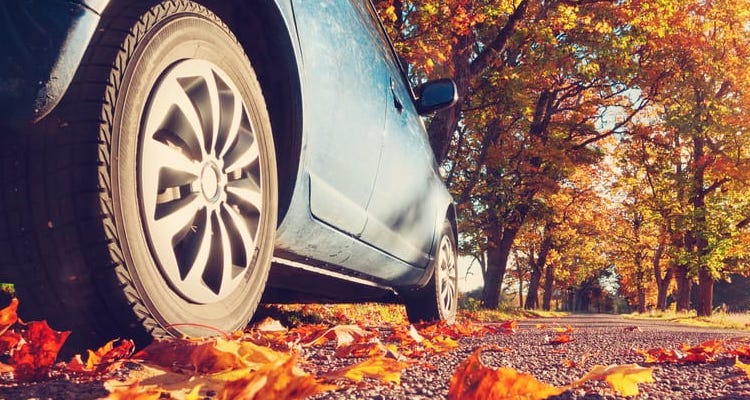Saying goodbye to summer is never easy, but it gives you the chance to enjoy pumpkin spice lattes, football season, festive holidays and pleasant driving weather. It’s also the perfect time to get your car ready for harsh winter weather. Prepping your car in the fall can sometimes require a mechanic, but some of the maintenance can be easily done on your own. Make sure to follow these six fall car care tips before it’s too late.
Is Your Car Fall Ready?
1. Check Your Tires
In the fall and especially in the winter, your tire pressure becomes even more important. You need the proper PSI (pounds per square inch) of inflation so that your tires grip the road properly in inclement weather. Changing temperatures can cause the pressure to fluctuate rapidly, so you’ll want to use a tire gauge to check this at least once a month. This time of year also comes with the potential of snow and ice. If you live in a location where you need snow tires, you should have them changed out before the first snow falls.
2. Check the Oil
The fall is an excellent time to change your oil (at the recommended interval). You should consult your car’s manual to determine the recommended oil interval, as this varies by manufacturer and driving habits. If your car has an oil-monitoring system, you can use this feature and pay attention to its alerts.
3. Check Your Heat
Always make sure to check whether your heater is working properly. When cold weather hits you do not want to be without a heater. It’s also smart to ensure the defroster works, as well. Driving with a fogged-up windshield is a safety hazard. If your heater or defroster is in need of repair, take your vehicle to your local auto repair shop right away.
4. Check the Brakes
Getting your brakes checked before the Fall and Winter seasons is extremely important. Your brakes are crucial for driving safely. Cold weather often heightens brake issues because the roads can become slippery from snow and ice. Also, listen for unusual noises that could signal failing brake pads.
5. Check the Lights
Walk around the outside of your vehicle to check and make sure that the headlights, tail lights, brake lights, and flashers are working as they should. Replace any broken or blown-out bulbs. You want to make sure other drivers see you on the road, even in bad weather where visibility is low.
6. Check the Battery
It is very important to check the battery for a strong charge and any signs of corrosion. Take your vehicle to your local mechanic for a diagnostic check-up. If your car needs a new battery, take a mechanic can replace it fairly quickly. A well-functioning battery is crucial to starting your vehicle, especially in the cold Winter months.

